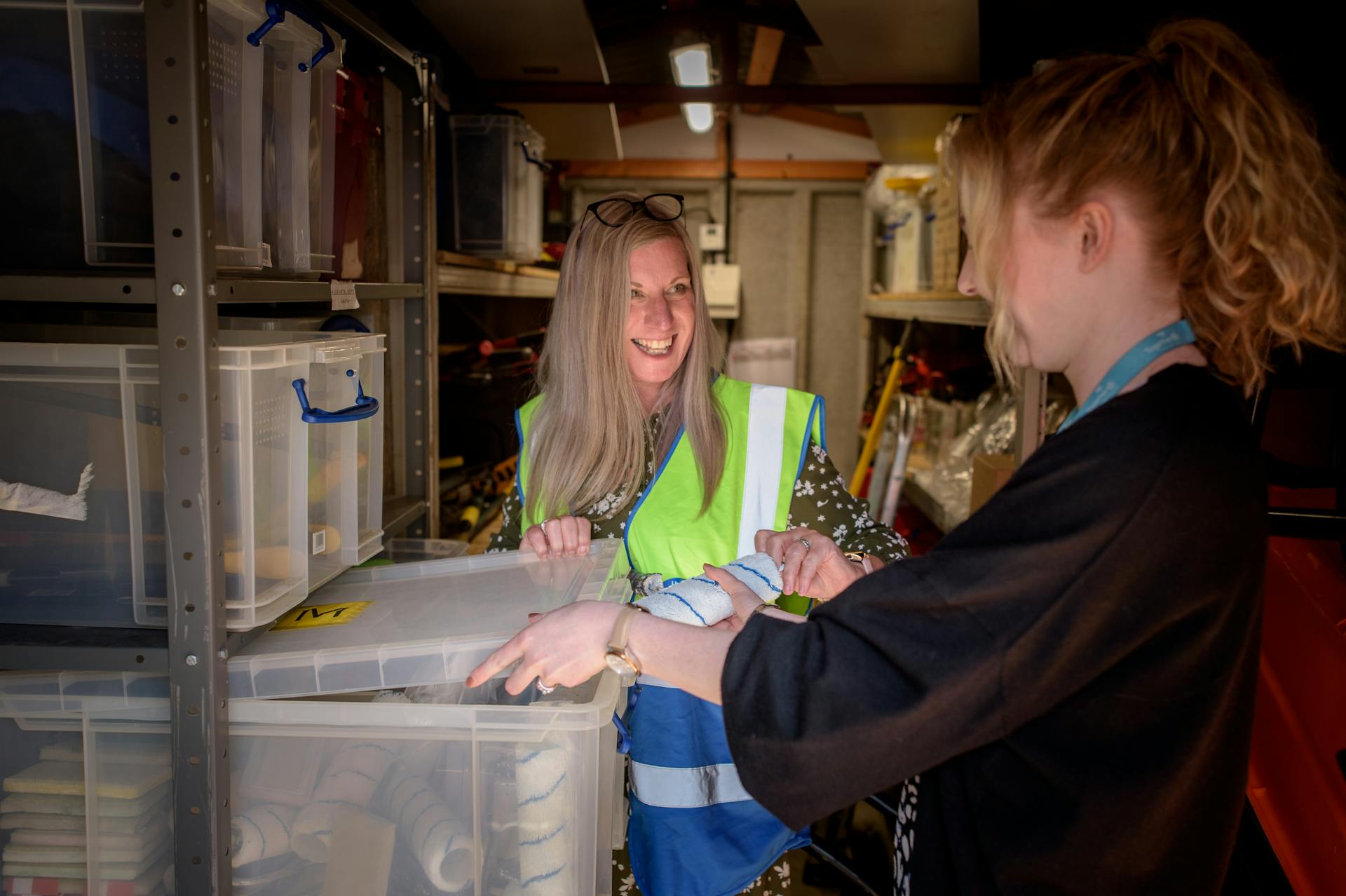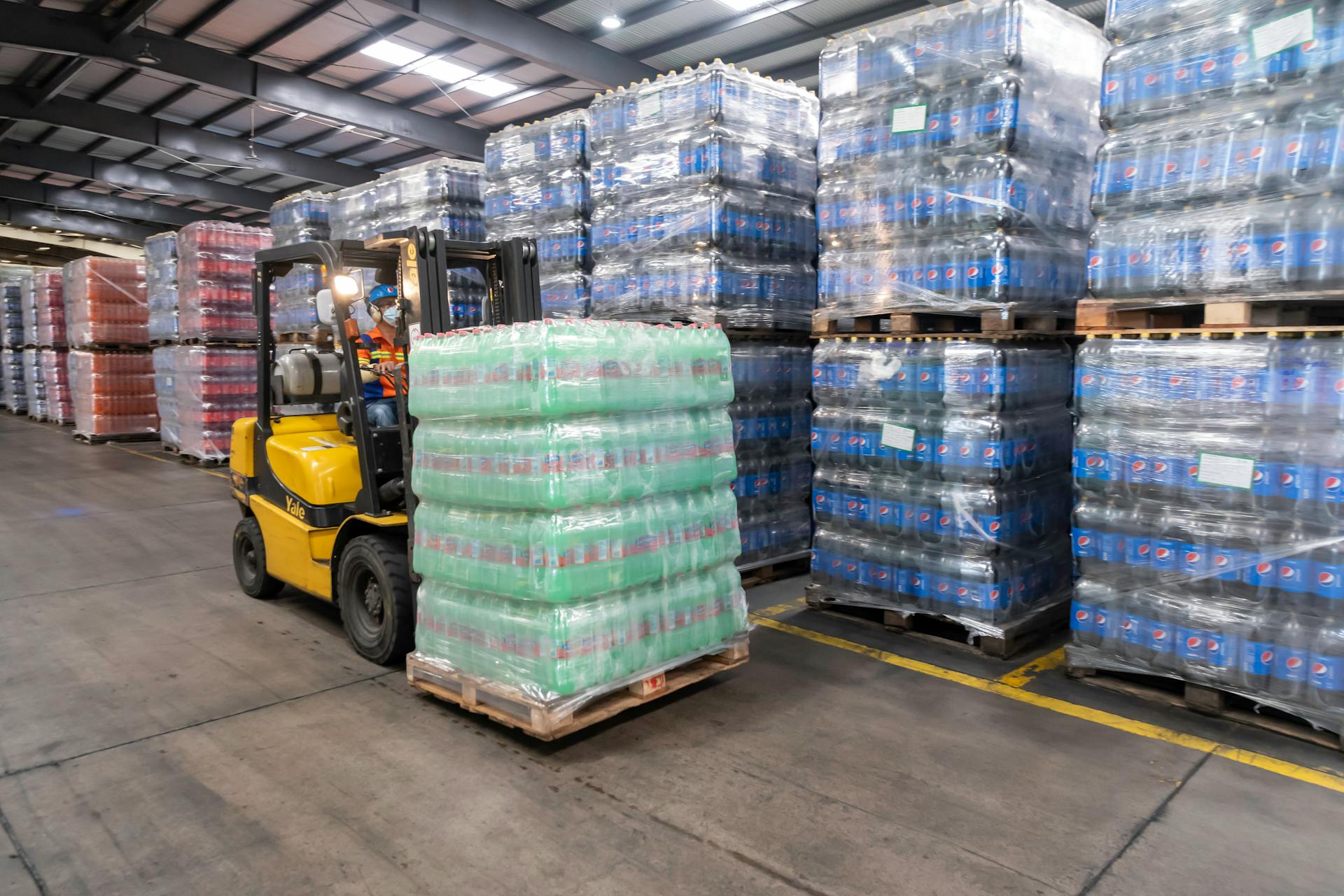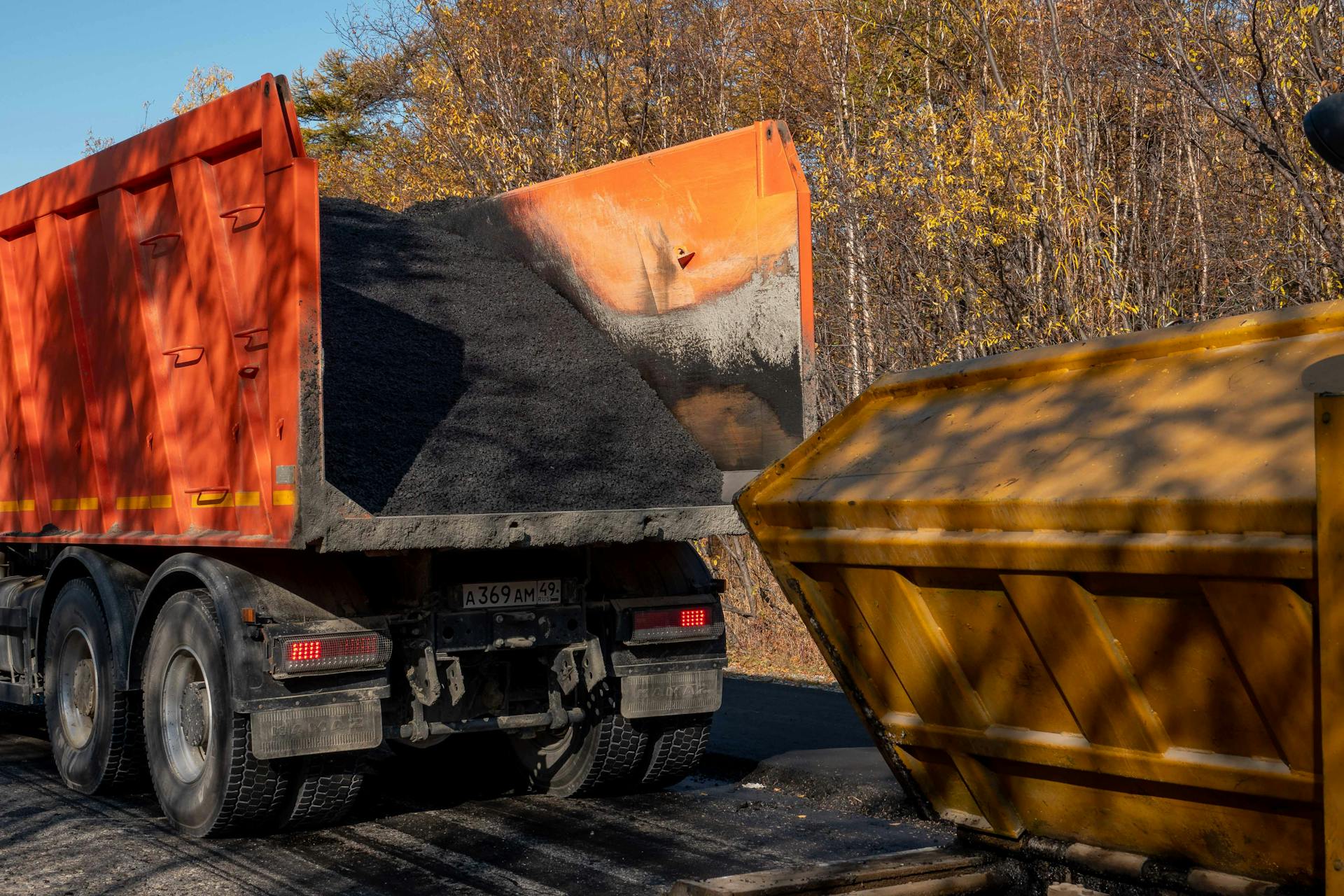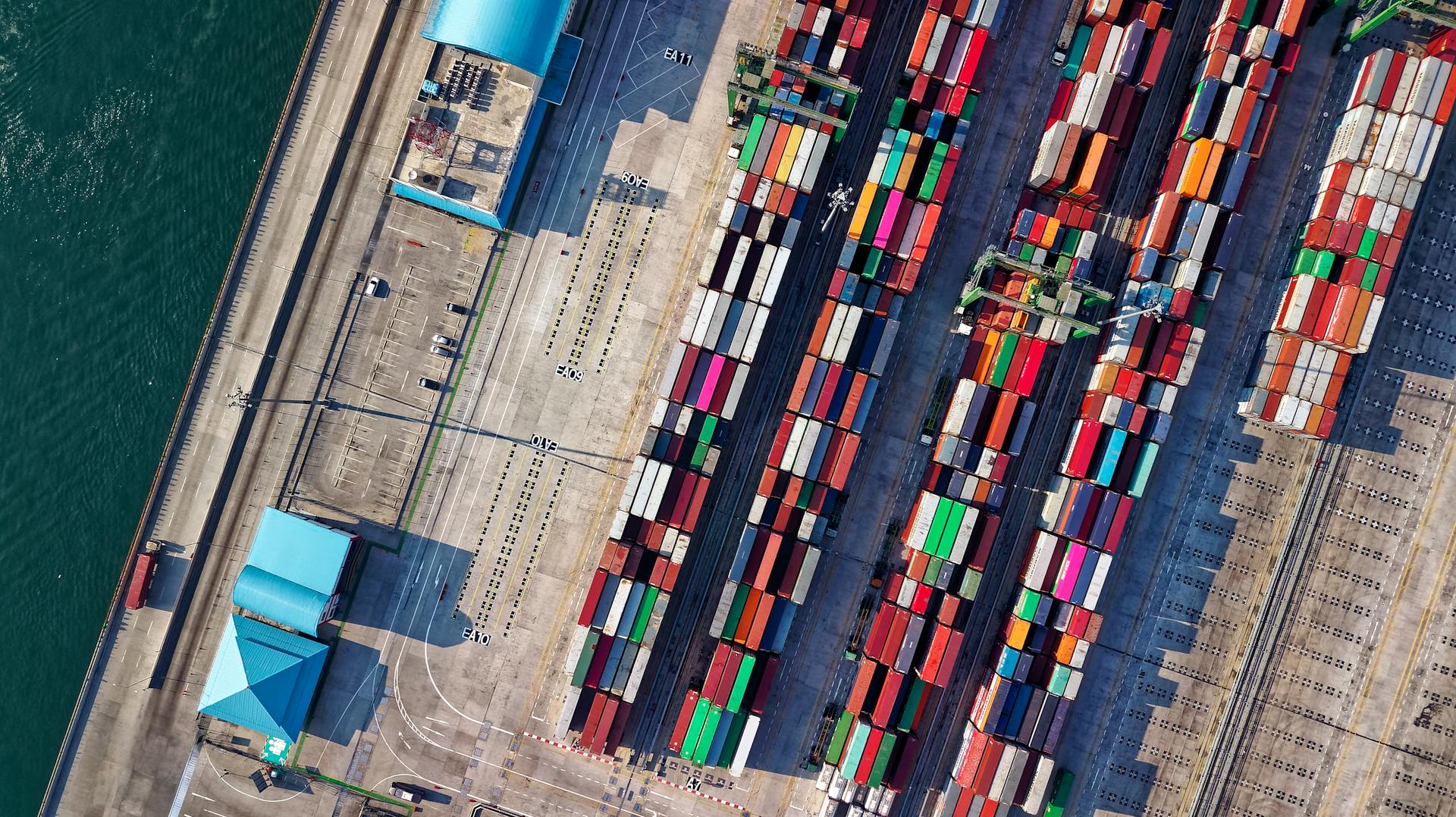
Transload and cross-dock are two popular logistics solutions that can help streamline your supply chain, but they're not interchangeable. Transload operations are typically used for bulk commodities like oil, coal, or grain, and involve transferring goods from one mode of transportation to another.
Transload facilities usually have large outdoor storage areas and are often located near ports or rail yards. They can handle massive volumes of cargo, making them ideal for industries that require large-scale shipments.
The key advantage of transload operations is their ability to accommodate oversized or overweight cargo, which can't be easily handled by traditional cross-dock facilities. In fact, transload operations can even handle cargo that's too large for standard shipping containers.
However, transload operations can be more time-consuming and labor-intensive than cross-dock operations, which can lead to increased costs and longer delivery times.
Suggestion: Cargo Ship vs Container Ship
What Is Transloading and Cross Docking?
Transloading involves long-term storage and unpacking/re-palletization, making it a more labor-intensive process compared to cross docking.
Cross docking, on the other hand, relies on quick turnaround times to redirect goods for efficient outbound delivery.
Unlike cross docking, transloading requires unpacking and re-palletization, which can be time-consuming and increase costs.
Cross docking facilities aim for a quick turnaround time, usually under 24 hours, to minimize storage and maximize efficiency.
Clear communication between the carrier, shipper, and 3PL provider is crucial for successful cross docking, as it involves multiple parties and a tight schedule.
Explore further: On Time Cross Docking
Benefits of Transloading and Cross Docking
Transloading and cross-docking are two shipping methods that offer numerous benefits to businesses. One of the key advantages of transloading is flexibility in shipping, allowing adjustments in shipping methods for complex, long-haul shipments.
Transloading reduces costs per mile by consolidating goods for specific transportation modes. This can lead to significant cost savings for companies that rely on long-distance shipping.
Cross-docking is another efficient method that requires minimal to no storage, lowering warehouse costs. This results in reduced storage and transit times, making goods available for delivery faster.
Transloading also offers domestic shipment adaptability, allowing goods to be repackaged for domestic compliance after international shipment. This flexibility is particularly useful for companies that import and export goods regularly.
Cross-docking enables companies to keep lower inventory levels, reducing overhead costs and minimizing storage needs. This can be especially beneficial for businesses with limited storage space or high inventory turnover.
Cost and Efficiency
Transloading can enhance supply chain efficiency by utilizing more than one mode of transport, which may be more cost-effective or faster for reaching the end user.
Reducing labor costs is a significant advantage of cross-docking, as it requires less manual handling of goods, saving labor time and reducing the need for extensive workforce training and management.
Cross-docking can significantly cut labor costs by reducing the need for picking, packing, and storing goods.
A large volume of goods is necessary for cross-docking to be cost-effective, making it less effective for smaller operations.
You might like: Moving Companies across Country Cost
Cross-docking facilities can act as a junction for inbound and outbound cargo, allowing for the redirection of goods and the consolidation of shipments.
By speeding up the delivery process and eliminating unnecessary steps, cross-docking can save businesses both time and money, improving customer satisfaction and giving a competitive edge in the marketplace.
Drawbacks and Considerations
Cross-docking and transloading both have their challenges, and it's essential to consider these drawbacks before choosing a method. Precise coordination is required for cross-docking, demanding reliable logistics partners to prevent delays.
Some products require storage or sorting that isn’t feasible in a cross-docking setup, limiting its suitability. This can lead to complications and added costs for businesses that need to store or sort their goods.
Transloading, on the other hand, involves additional handling and labor costs, which can increase expenses. It also adds steps to the process, increasing the risk of delays and holding up your supply chain.
Drawbacks of Transloading
Transloading can be a complex and costly process. The extra handling involved in transloading can increase costs, making it a less desirable option for some businesses.
Transloading involves transferring goods from one mode of transportation to another, which can add steps to the process, increasing the risk of delays and holding up your supply chain. Delays can be costly and damaging to your reputation.
Here are some of the key drawbacks of transloading:
Drawbacks of Cross Docking
Cross-docking requires precise planning and reliable logistics partners to prevent delays. This is a crucial aspect to consider, as any misstep can lead to costly mistakes.
Not all goods are suitable for cross-docking, especially those that require storage or sorting that isn't feasible in a cross-docking setup. This can be a major drawback, especially for businesses with complex inventory needs.
Choosing the Right Service
To choose the right service, it's essential to consider your specific business needs and operational capabilities. This will help you determine whether transloading or cross-docking is more suitable for your shipping strategy.
Transloading is a more complex process that involves cargo in containers, which are then transloaded into different modes of transportation, such as ships, trains, planes, or trucks. This can be a good option for global deliveries.
Cross-docking, on the other hand, is a more prompt process that involves goods already packed on pallets. This method requires proper management and communication to ensure smooth delivery.
Ultimately, the right choice between transloading and cross-docking depends on your specific operational needs and the level of complexity you're willing to manage.
What Service Do You Need?
Choosing the right service can be a daunting task, especially with so many options available. Not all goods are suitable for transloading, as certain products require a more controlled environment than a transload facility can provide.
High-demand or sensitive/perishable items benefit from cross-docking, which allows them to reach stores quickly. This service is ideal for products that are pre-sorted and ready for delivery upon arrival, minimizing inventory storage costs and handling times.

Consider the complexity of your shipment: if it involves multiple transportation modes, such as rail, ship, and trucking, transloading might be the better choice. This service also shines when shipping goods internationally and needing to repackage or consolidate for domestic delivery.
To determine whether cross-docking or transloading is right for you, think about your business needs and operational capabilities. Each service has its unique set of benefits and limitations, so it's essential to understand the nuances of both.
In some cases, cross-docking can completely eliminate the time spent in storage, saving businesses money on unnecessary storage fees. This service is perfect for companies looking to save time and enhance efficiency by gathering goods from other transports and combining them into a single transport.
Docking vs Transporting Services
Choosing the right service for your shipping needs can be overwhelming, especially with the many options available. Transloading and cross-docking are two services that are often used in the shipping industry.
Transloading is a process that involves transferring cargo from one container to another, often from a ship to a train or truck. This process requires proper management and communication to ensure smooth delivery. In contrast, cross-docking is a more prompt process that involves transferring goods from one vehicle to another without the need for storage.
Both transloading and cross-docking are essential for the supply chain, but they serve different purposes. Transloading is used to prepare goods for delivery, while cross-docking is used to move products from producers to customers.
Here are some key differences between transloading and cross-docking:
- Transloading involves palletizing freight until the next phase of the supply chain is executed.
- Cross-docking does not involve palletizing freight and is typically used for shorter distances.
- Transloading often involves customs control and weight examination, while cross-docking typically does not.
Ultimately, the choice between transloading and cross-docking depends on your specific shipping needs and the stage of the supply chain you are at. By understanding the differences between these two services, you can make an informed decision and choose the right service for your business.
Services and Options
Transloading uses cargo in containers, making it a good option for global deliveries where products are transloaded into the proper truck that corresponds with the goods within the delivery.
Transloading is a process that involves moving cargo from one mode of transportation to another, such as from a ship to a train, plane, or truck. This is often necessary for international shipments.
Transloading can be a time-consuming process, especially when the product has yet to be palletized upon removal from its receptacle. This is in contrast to cross-docking, which is a more prompt process.
Cross-docking is a process where goods are already packed on pallets and can be quickly unloaded and reloaded onto another truck or mode of transportation. This makes it a good option for businesses that need to get products to market quickly.
In both transloading and cross-docking, proper management and communication are key to smooth delivery. This includes coordinating with shippers, carriers, and receivers to ensure that products are delivered on time and in the right condition.
A unique perspective: Straight Truck vs Tractor Trailer
Frequently Asked Questions
What is the difference between transloading and drayage?
Transloading is the process of switching modes of transportation, while drayage is the final delivery to the destination. Understanding the difference between these two logistics services can help streamline your supply chain.
What is a cross dock load?
A cross-dock load refers to a shipment of goods that is received, sorted, and loaded directly onto outgoing trucks at a cross-docking facility, eliminating the need for storage. This efficient process enables fast and cost-effective distribution of products to their final destinations.
Sources
- https://transloadservicesusa.com/blog/transloading-vs-cross-docking/
- https://www.inboundlogistics.com/articles/transloading-vs-cross-docking/
- https://www.wsinc.com/transloading-vs-cross-docking-knowing-the-difference/
- https://meltonlogistics.com/insights/cross-docking-transloading/
- https://shadow-group.com/blog/cross-dock-and-transload-services-whats-the-difference/
Featured Images: pexels.com


